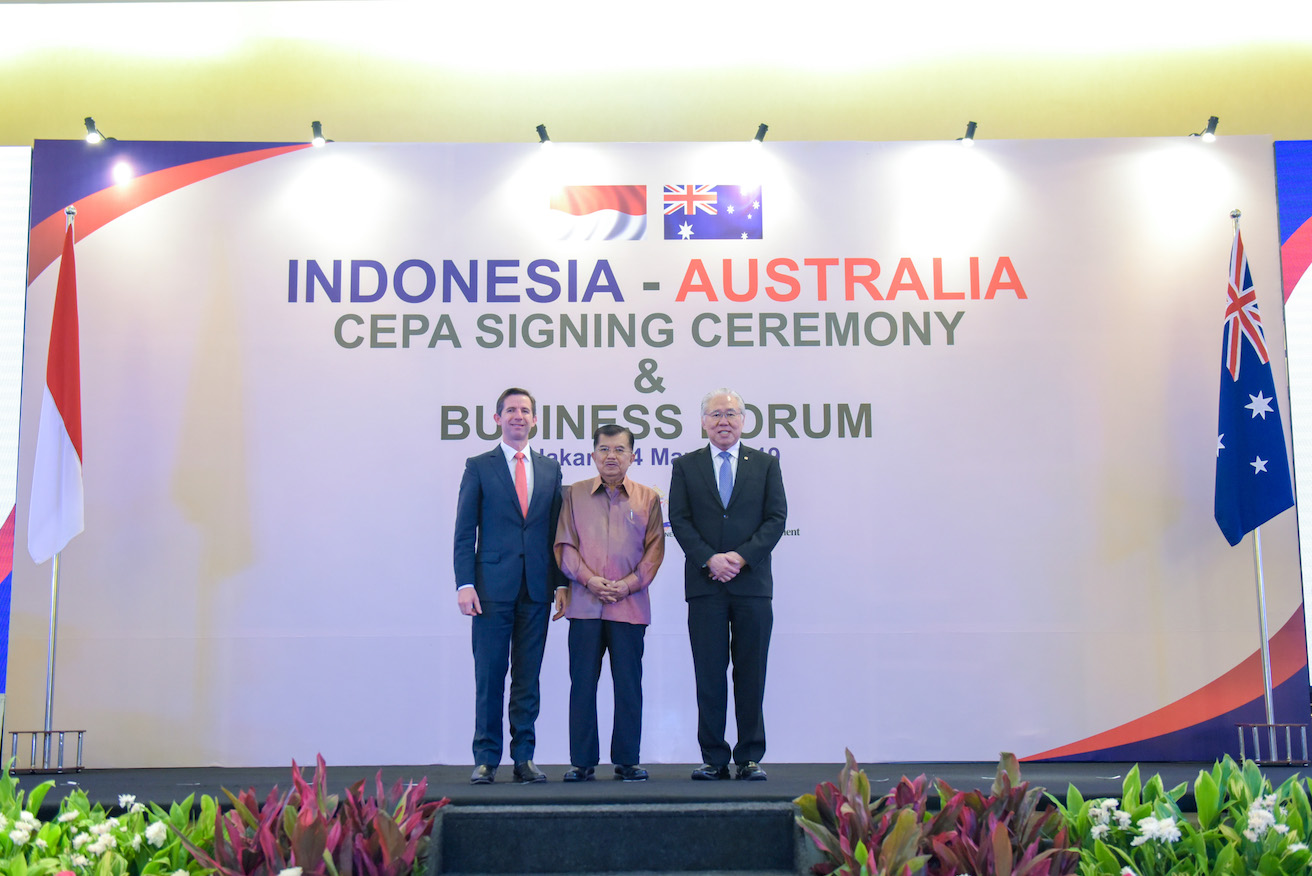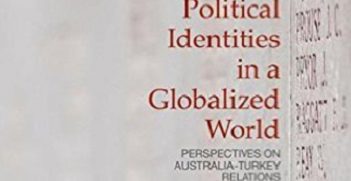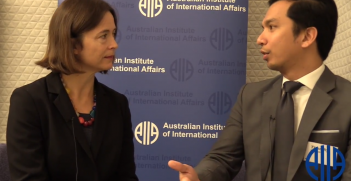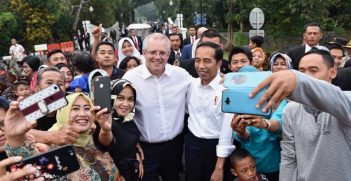The Indonesia-Australia Closer Economic Partnership Agreement (IA-CEPA): A Game Changer?

A decade has passed since the formation of the Indonesia-Australia Comprehensive Economic Partnership Agreement (IA-CEPA), which is finally on the cusp of its final stages of ratification. Will the IA-CEPA strengthen the bilateral economic relationship between Australia and Indonesia?
Despite their geographical proximity, Australia and Indonesia are minor trading partners. In 2018, Australian merchandise exports to Indonesia were valued at just $6,823 million, and imports from Indonesia $4,996 million. Trade in services was smaller still, as the exports to Indonesia were worth $1,697 and imports were worth $4,068 million. Neither country is in the other’s top 10 trading partners.
The recent signing of the Indonesia-Australia Closer Economic Partnership Agreement (IA-CEPA), though, is being heralded by many as opening the way for a substantial expansion of the bilateral economic relationship.
Terms of the Agreement
In terms of merchandise trade, the agreement will see over 99 percent of Australian exports entering Indonesia either tariff-free or under preferential treatment by 2020. Virtually all Indonesian exports to Australia will face zero tariffs. Indonesia will guarantee import permits for a range of Australian products, including live cattle, rolled steel coil, citrus products, carrots and potatoes.
In the services sector, Indonesia has agreed to open up a range of industries, including technical and vocational education, aged care and hospitality, to greater Australian participation and investment.
Significantly the agreement also commits both parties to continuing to work to identify and reduce or eliminate non-tariff barriers to bilateral trade.
However, as the government stresses, the agreement is more than a traditional Free Trade Agreement. Department of Foreign Affairs and Trade (DFAT) asserts that it will “shape the bilateral relationship for decades to come, creating the framework for a new chapter of closer economic engagement between Australia and Indonesia and opening new markets and opportunities for businesses, primary producers, service providers and investors.”
Criticisms
However, the agreement has not been without its critics, as has been made clear particularly during the process of parliamentary ratification currently underway in both countries.
In Australia, the trade union movement and to an extent also the Australian Labour Party (ALP) have expressed reservations along two major lines. First, they have questioned the inclusion of investor-state dispute settlement provisions in the agreement. They argue that these could leave the Australian government open to challenge in an international tribunal over policies intended to promote health, preserve the environment and the like, on the grounds that they restricted trade. Second, they reject provisions in the Agreement which would allow the use of temporary Indonesian workers in Australia without domestic labour market testing: the union movement has been particularly vocal on this point.
In Indonesia, the problems IA-CEPA faces are more broad-based. Support for the liberalisation of international trade and investment has never been particularly powerful; the inclination has generally been to protect local producers with tariffs and subsidies. It will be a test of President Jokowi’s persuasive power to get the Indonesian parliament either to approve the agreement, or agree to allow him to make a presidential ruling on the matter.
Impact on the bilateral economic relationship?
What effect will the agreement have on the Australia-Indonesia economic relationship?
The agreement is likely to lead to some increase in the total value of trade between Indonesia and Australia. But this increase will disproportionately benefit Australian exporters.
The reductions in tariffs, lifting of quotas and liberalisation of licensing arrangements by Indonesia will enable some Australian producers to expand their trade with Indonesia and encourage others to commence such trade. Live cattle exporters, for example, have clearly welcomed the agreement.
Nonetheless, Australian exporters will still face difficulties in trading with Indonesia, including unreliable infrastructure, bureaucratic inefficiency and corruption.
As for Indonesia, as noted above, even before IA-CEPA tariff barriers faced by Indonesian exports to Australia were very low, and in many cases zero. Any further reductions will have little impact. Loosening up of the rules of origin might facilitate the export of Indonesian-assembled vehicles, including electronic powered ones, to Australia, but the overall impact is not likely to be great.
Moreover for many Indonesian producers, the Australian market – no matter how open – is simply too small to be particularly attractive. Indonesian manufacturers who want to export – and many do not, finding the local market for their goods not substantial enough – are likely to find that the markets in other ASEAN countries, or in China, or the US, to be more attractive.
Any increases in trade in services is also likely to benefit Australian companies, as it is difficult to see many Indonesian legal, educational, financial or other service firms setting up shop in Australia as a result of the agreement.
However there is one major services area where Australian suppliers could have benefitted substantially, but which the agreement does not address, and that is tourism.
In 2018 Australians spent $3,454 million on travel in Indonesia; in comparison, Indonesians spent just $1,340 million on travel in Australia.
One of the biggest barriers to increasing the value of Australia travel exports to Indonesia is the complex, intrusive and expensive process Indonesians have to go through to get a tourist visa for Australia. The IA-CEPA will relax the rules regarding the issuing of Australian business visa for Indonesians – but not for tourist visas.
As for Indonesia, DFAT has argued strongly that Indonesia will benefit from greater Australia contributions to improving the quality of its human resources, including through opening up the Indonesian technical and vocational training sector to greater Australian participation and making more visas available for Indonesians to gain work experience in Australia.
The Indonesian government has long had improvement in the quality of the country’s human resources as a major policy goal. Australia’s development assistance programs with Indonesia have similar objectives. Indeed, it would be easy to see this part of the agreement as a private sector, commercially driven replacement for at least some of the funds cut from the Australian ODA to Indonesia.
Overall, there is a danger that the commercial benefits of the agreement are being over-hyped, especially on the Australian side. We should not expect a major turn-around in the trade and investment relationship between Australia and Indonesia, at least not in the short or medium term.
Long-term objectives?
The IA-CEPA needs to be seen in a context wider than simply trade and investment.
On 31 August 2018, Australia and Indonesia concluded a Joint Declaration on a Comprehensive Strategic Partnership. This Declaration committed the signatories to working together towards “a stronger, resilient and more flexible regional architecture in the Indo-Pacific region and . . . to resolving our shared regional and global challenges.”
IA-CEPA was nominated as the primary facilitating mechanism for the first of the Declaration’s five Pillars: Enhancing Economic and Development Partnership. IA-CEPA thus needs to be seen not as a stand-alone commercial treaty but in this broader, and longer-term, context. The measure of its success will be the extent to which it contributes to the Comprehensive Partnership’s strategic goals of closer and enhanced relationships between Australia and Indonesia.
Colin Brown is an adjunct professor in the Griffith Asia Institute, Griffith University and a member of the Australia Indonesia Business Council.
This article is published under a Creative Commons Licence and may be republished with attribution.





